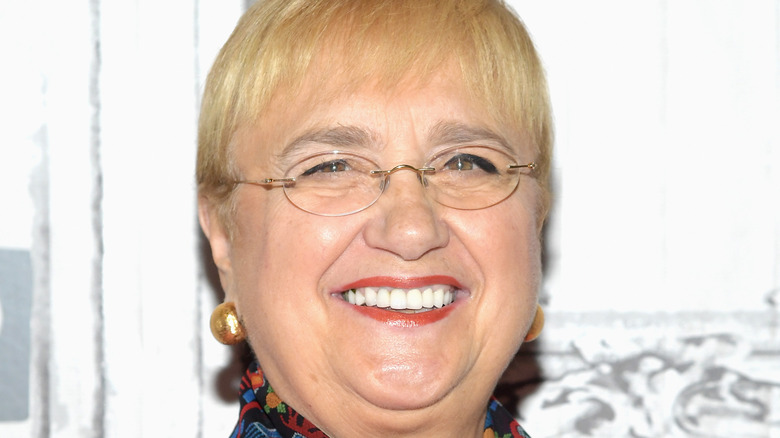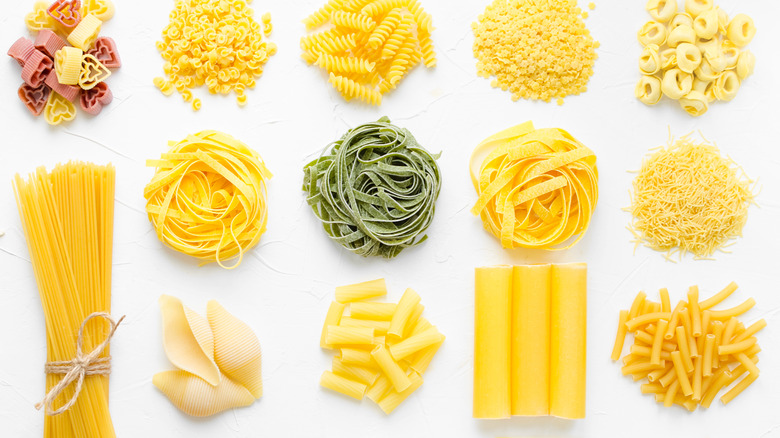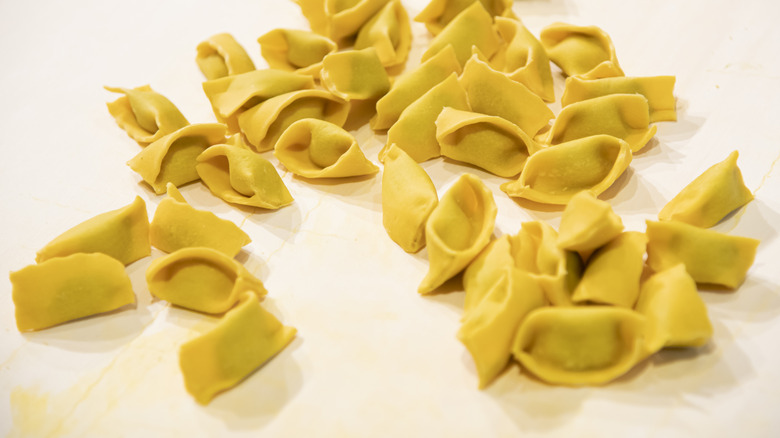How Lidia Bastianich Picks The Best Pasta At The Grocery Store
We may receive a commission on purchases made from links.
We've all been there, standing in the pasta aisle at the grocery store with a seemingly endless array of pasta options to accompany our favorite jarred (or homemade for those overachievers) pasta sauce. One of life's greatest pleasures is pasta night, so it's no wonder that when it comes to selecting which type of pasta to buy we could use a little bit of help.
You could start with your favorite pasta shape and plan your meal based on which sauce would pair well with your beloved tri-color fusilli or mezzi rigatoni. Bon Appetit notes that ridged and tube-shaped pastas hold on to a thick, hearty sauce best. But Lidia Bastianich, renowned italian-American chef, cookbook author, and owner of the ever-popular Eataly eateries knows a thing or two about pasta. The Washington Post pulled a tip from chef Lidia Bastianich's cookbook, "Lidia's Mastering the Art of Italian Cuisine" where Bastianich suggests sticking with long, flat pastas for butter and olive oil-based sauces.
If your pasta selection has been mostly based on that day's availability of your preferred pasta shape, tips from pasta expert and Italian-American chef Lidia Bastianich can help ensure you're getting the most out of your noodle of choice.
Chef Lidia's tip for the best dry pasta
When looking for dry, packaged pasta at your local market, Bastianich told People to pay attention to color and texture that indicate how long the pasta has been sitting on the shelf. A dryer-looking, cracked pasta may hint that a package has been sitting on the shelf for anywhere from a few months to up to a year or two.
Bastianich tells Today that when searching for your dry pasta of choice, look for noodles with a yellow hue and uniform texture that aren't too smooth or shiny. She notes that pasta that doesn't have a rough texture won't allow sauce to adhere properly, which is not what you want when making a bolognese or classic marinara recipe. Bastianich also suggests steering clear of pasta that may be broken or splotchy, which is likely a sign it's been sitting on that shelf for a while.
Fresh pasta isn't always better
While more and more grocery stores are carrying fresh pasta options, the L.A. Times suggests sticking with dry pasta most of the time, as fresh pasta from the store can be less than stellar. It may also be a different flavor and texture than home cooks are used to, running the risk of changing the end result of the recipe. There are certainly a variety of ways to use fresh pasta at home, but the notion that fresh pasta always trumps dry pasta (especially when accompanied by a higher price tag) isn't necessarily true.
With the rise in tutorials on making fresh pasta at home, some home cooks may skip the pasta aisle altogether looking to use their flour, egg, and kitchen tools to craft their own fettuccine or ravioli. For those of us who enjoy cooking up dry pasta in mere minutes for a simple dinner, Bastianich tells Today that dry pasta that is made up of semolina flour and water only is your best bet when choosing your pasta off the shelf.


